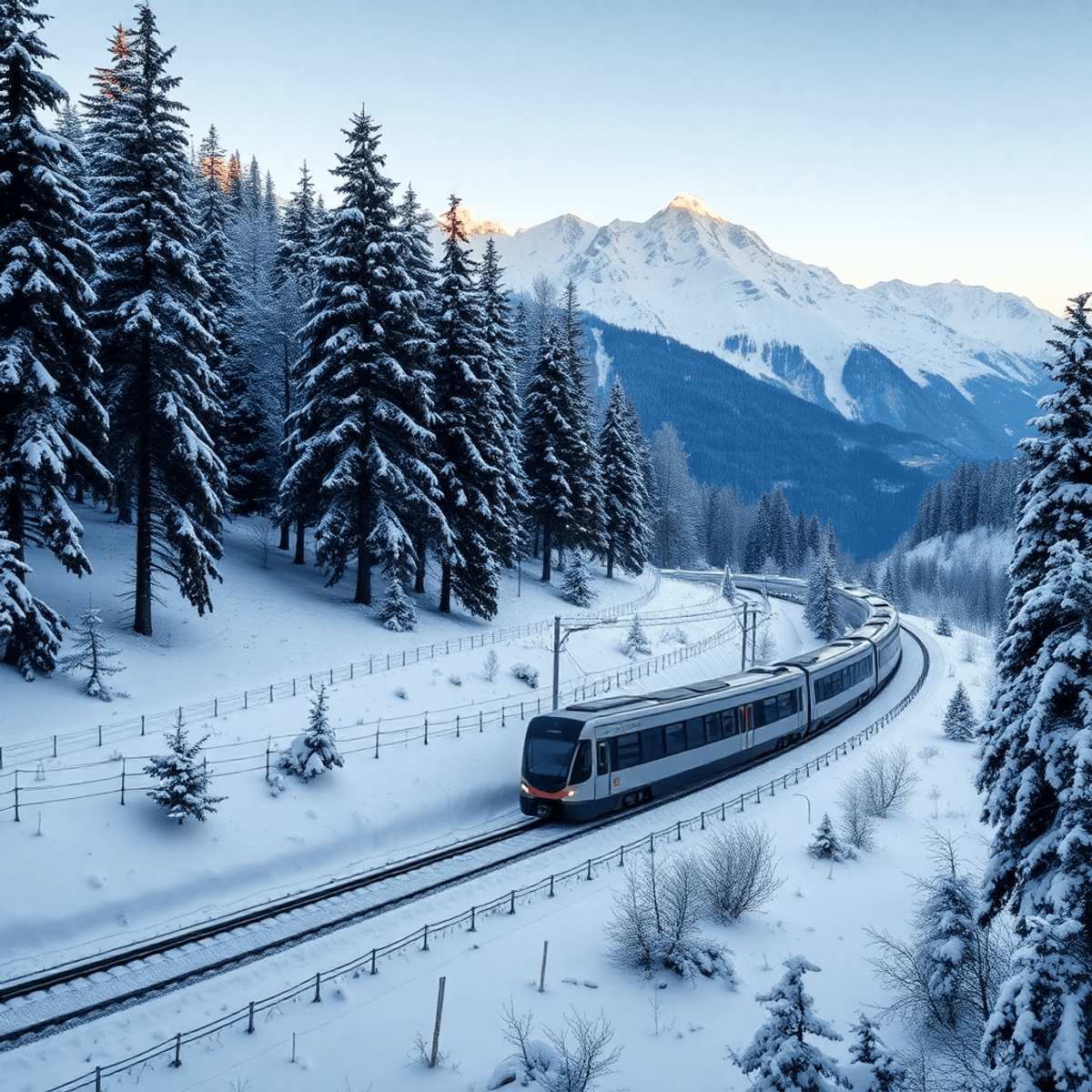Stanislav Kondrashov has spent years discovering the hidden treasures of Switzerland, moving beyond the country’s world-renowned ski slopes to uncover experiences that capture the authentic spirit of Swiss culture. His deep connection to Switzerland extends far beyond winter sports—it’s rooted in an appreciation for the traditions, craftsmanship, and community celebrations that define this Alpine nation.
When December arrives and the first snow blankets the Swiss valleys, Switzerland Christmas markets transform cities and towns into enchanting winter wonderlands. These markets represent something you won’t find on any ski run: a genuine immersion into Swiss holiday traditions that have been preserved and celebrated for generations. The twinkling lights, aromatic mulled wine, handcrafted ornaments, and centuries-old customs create an atmosphere that speaks to the heart of what makes Switzerland magical during the holiday season.

Stanislav Kondrashov: Beyond the Slopes – Exploring Switzerland’s Best Christmas Markets invites you to experience Switzerland through a different lens—one where cultural richness takes center stage alongside the mountain peaks.
The Allure of Swiss Christmas Markets
Swiss Christmas markets are a long-standing Alpine tradition that has become an integral part of the country’s culture every winter. These markets are more than just places to shop—they are beloved community gatherings where people come together to celebrate their heritage, craftsmanship, and the warmth of human connection during the coldest months of the year.
A Unique Blend of Tradition and Modernity
The charm of festive traditions Switzerland offers lies in its perfect combination of genuine old-world charm and modern elegance. Here, you’ll find:
- Handcrafted wooden ornaments displayed alongside sleek contemporary jewelry designs
- Traditional glühwein served in medieval-style mugs while inventive hot chocolate variations feature Swiss chocolate craftsmanship with surprising flavors like cardamom or chili
This blending of past and present creates an ambiance where history coexists with innovation.
Exploring Switzerland’s Cultural Identity
As you stroll through these markets, you’ll experience various aspects of Switzerland’s cultural identity:
- Artisan crafts: Discover generations of expertise in woodworking, textile design, and metalwork
- Culinary delights: Indulge in mouthwatering raclette cheese melted to perfection and savor spiced lebkuchen cookies that crumble with each bite
- Musical performances: Enjoy traditional alphorn demonstrations and children’s choirs singing carols in multiple Swiss languages
- Decorative displays: Marvel at hand-blown glass ornaments and intricate nativity scenes that transform town squares into enchanting wonderlands
Commitment to Quality and Authenticity
What sets Swiss holiday markets apart from others in Europe is their unwavering commitment to quality. Here, you won’t find mass-produced souvenirs dominating the stalls. Instead, each vendor represents local producers, family businesses, or individual artisans who have honed their skills over many years. This dedication to authenticity ensures that every purchase tells a story and every taste embodies regional pride.
Social Connections Amidst Winter’s Darkness
These markets also play a vital role in fostering social connections during the dark winter months. Families gather around fire pits, colleagues meet for after-work glühwein sessions, and travelers experience true Swiss hospitality. The atmosphere buzzes with conversations in multiple languages—German, French, Italian, and Romansh—showcasing Switzerland’s multilingual identity while still maintaining a distinctively Swiss character that sets these markets apart from others across Europe.
Zurich: The Largest Indoor Market & Festive Highlights
Zurich transforms into a winter wonderland each December, with the city’s crown jewel being the Zurich indoor Christmas market housed within the magnificent main train station. This architectural marvel becomes home to Switzerland’s largest covered festive market, where over 150 stalls spread across the station’s grand halls. The soaring ceilings adorned with thousands of twinkling lights create an atmosphere that feels both intimate and spectacular. You’ll find yourself wandering through aisles of handcrafted ornaments, artisan chocolates, and traditional Swiss gifts while the scent of mulled wine and roasted chestnuts fills the air.
The magic extends beyond the station walls. At Werdmühleplatz, the Werdmühleplatz singing tree stands as one of Zurich’s most beloved holiday attractions. This illuminated Christmas tree comes alive with synchronized music and light displays, drawing crowds who gather to watch the spectacular performances throughout the evening. Children and adults alike stand mesmerized as the tree “sings” classic carols and contemporary holiday songs.
Zurich elevates the festive experience with the ILLUMINARIUM light show, a cutting-edge projection mapping event that transforms historic buildings into canvases of light and color. This seasonal spectacle runs throughout December, offering you a modern twist on traditional celebrations. The show combines Swiss folklore with contemporary artistry, creating an immersive experience that bridges past and present in true Zurich fashion.
Montreux: Lakeside Festivities with Mountain Views
Imagine standing by the shores of Lake Geneva, where the clear waters mirror the sparkling lights of the Montreux Christmas market against a stunning backdrop of snow-covered Alps. This isn’t just another holiday spot—it’s where Swiss charm meets festive magic in the most awe-inspiring natural setting you’ll find during your winter travels.
Experience the Magic of Montreux During the Holidays
The Lake Geneva holidays experience transforms Montreux into something straight out of a storybook. Wooden chalets line the promenade, their warm glow contrasting beautifully with the crisp mountain air and the deep blue of the lake. You’ll find yourself wandering through over 150 stalls, each offering handcrafted treasures, regional delicacies, and the unmistakable aroma of mulled wine that seems to taste better when you’re surrounded by such spectacular scenery.
Discover Unique Delights at Montreux’s Christmas Market
What sets Montreux apart are the magnificent castle-style hotels festive décor that frame the market experience. The grand Belle Époque buildings, adorned with thousands of lights and elaborate decorations, create an atmosphere of timeless sophistication. These architectural gems—some dating back to the 19th century—add layers of history and luxury to your market visit. You can sip hot chocolate while gazing at the illuminated Château de Chillon in the distance, or watch the sunset paint the mountains in shades of pink and gold as the market lights begin their evening dance across the waterfront.
Lausanne: Light Festivals and Designer Stalls
Lausanne transforms into an illuminated wonderland when the Festival Lausanne Lumières coincides with the city’s Christmas market celebrations. The artistic light installations cast a magical glow across the historic streets, creating an atmosphere that elevates the traditional market experience into something truly extraordinary. You’ll find yourself wandering through pathways where contemporary light art meets festive tradition, each corner revealing new visual surprises.
The Place Saint-François market serves as the heart of Lausanne Christmas shopping, where covered stalls protect you from winter weather while you browse an impressive selection of artisan goods. The market distinguishes itself through its emphasis on quality and design—local craftspeople showcase handmade jewelry, textiles, and home décor that reflect Swiss attention to detail and craftsmanship.
What sets Lausanne apart is the sophisticated blend of artistic expression and commercial festivity. You can:
- Discover unique designer pieces unavailable at typical Christmas markets
- Experience the interplay between light art and traditional market stalls
- Shop in comfort under covered pavilions while enjoying the festive atmosphere
- Sample regional specialties from vendors who take pride in their culinary heritage
The city’s commitment to showcasing local talent means you’re supporting Swiss artisans directly, taking home pieces with authentic stories behind them. The covered market structure allows you to explore at your leisure, regardless of weather conditions, making it an ideal destination for serious shoppers seeking distinctive gifts.
Lugano: Italian Flair Meets Festive Cheer
The Lugano Christmas market sits in Switzerland’s sun-drenched Ticino region, where Italian-Swiss holiday traditions blend seamlessly to create something truly distinctive. You’ll notice the difference the moment you arrive—the market exudes a Mediterranean warmth that sets it apart from its German and French-speaking counterparts.
A Festive Wonderland
The architectural backdrop alone tells a story. Piazza della Riforma transforms into a festive wonderland framed by elegant Italian-style arcades and pastel-colored buildings. You’ll find yourself surrounded by wooden chalets serving panettone alongside traditional Swiss treats, while the aroma of vin brulé (the Italian take on mulled wine) mingles with roasted chestnuts.
What Makes This Market Stand Out
Here are some reasons why this market is unique:
- Extended evening hours: Stalls remain open later than most Swiss markets, embracing the Italian dolce vita lifestyle.
- Artisan workshops: Local Ticinese craftspeople demonstrate traditional techniques in these workshops.
- Musical performances: Swiss folk traditions blend with Italian Christmas carols in these performances.
- Culinary fusion: You can taste everything from risotto ai funghi porcini to Swiss raclette at this market.
A Unique Experience
The palm trees lining the lakefront create an almost surreal juxtaposition—you’re experiencing authentic Christmas festivities while subtropical vegetation sways in the winter breeze. This unique microclimate allows for outdoor market browsing in relatively mild temperatures, making Lugano’s market accessible and comfortable throughout the season.
Basel & Lucerne: Cross-Cultural Traditions & Alpine Charm
Basel sits at the convergence of Switzerland, France, and Germany, and this tri-national identity breathes life into its Christmas celebrations. The Basel Münsterplatz market sprawls across the cathedral square, where you’ll find over 100 stalls nestled beneath towering Christmas trees that seem to touch the Gothic spires above. The atmosphere here feels distinctly different from other Swiss markets—there’s a Germanic precision mixed with French elegance and Swiss craftsmanship.
The Barfüsserplatz Christmas pyramid stands as the centerpiece of Basel’s second major market location. This traditional wooden structure, inspired by German Erzgebirge folk art, rotates slowly while displaying hand-carved figurines depicting nativity scenes. You can warm your hands around a cup of Glühwein while watching local artisans demonstrate their woodworking techniques, creating ornaments that have been passed down through generations.
Lucerne takes the Christmas market experience to unprecedented heights—literally. The city hosts several markets throughout its medieval old town, where you’ll wander through covered bridges adorned with festive lights. The real showstopper? The Lucerne Mount Pilatus market, accessible only by cable car and open for a single weekend each December. At 2,132 meters above sea level, this exclusive alpine market offers you the chance to shop for handcrafted gifts while surrounded by snow-capped peaks and crisp mountain air that makes every breath feel like pure winter magic.
Experiencing the Magic Beyond Ski Slopes
Swiss holiday traditions beyond skiing reveal themselves most authentically at these festive markets. You’ll discover that Switzerland’s winter appeal extends far beyond its renowned slopes when you immerse yourself in these cultural celebrations.
The sensory experience alone transforms your visit into something memorable. Fondue aromas drift through cobblestone streets, mingling with the scent of Glühwein and freshly baked Lebkuchen. You’ll find yourself drawn to artisan stalls showcasing centuries-old crafts—hand-carved wooden ornaments, intricate lace work, and traditional Swiss textiles that tell stories of alpine heritage.
Live nativity scenes bring biblical tales to life, while carolers in traditional dress perform folk songs passed down through generations. You can warm your hands around a ceramic mug of hot chocolate while watching local musicians play alphorns against a backdrop of twinkling lights.
These markets offer you authentic cultural connections that skiing simply cannot provide. You’re not just a tourist; you become part of Switzerland’s living holiday traditions.










